Rain chains: 5 reasons to buy and 1 reason to skip
We’ve found five reasons to buy a rain chain, so you can give your gutters a well-needed upgrade
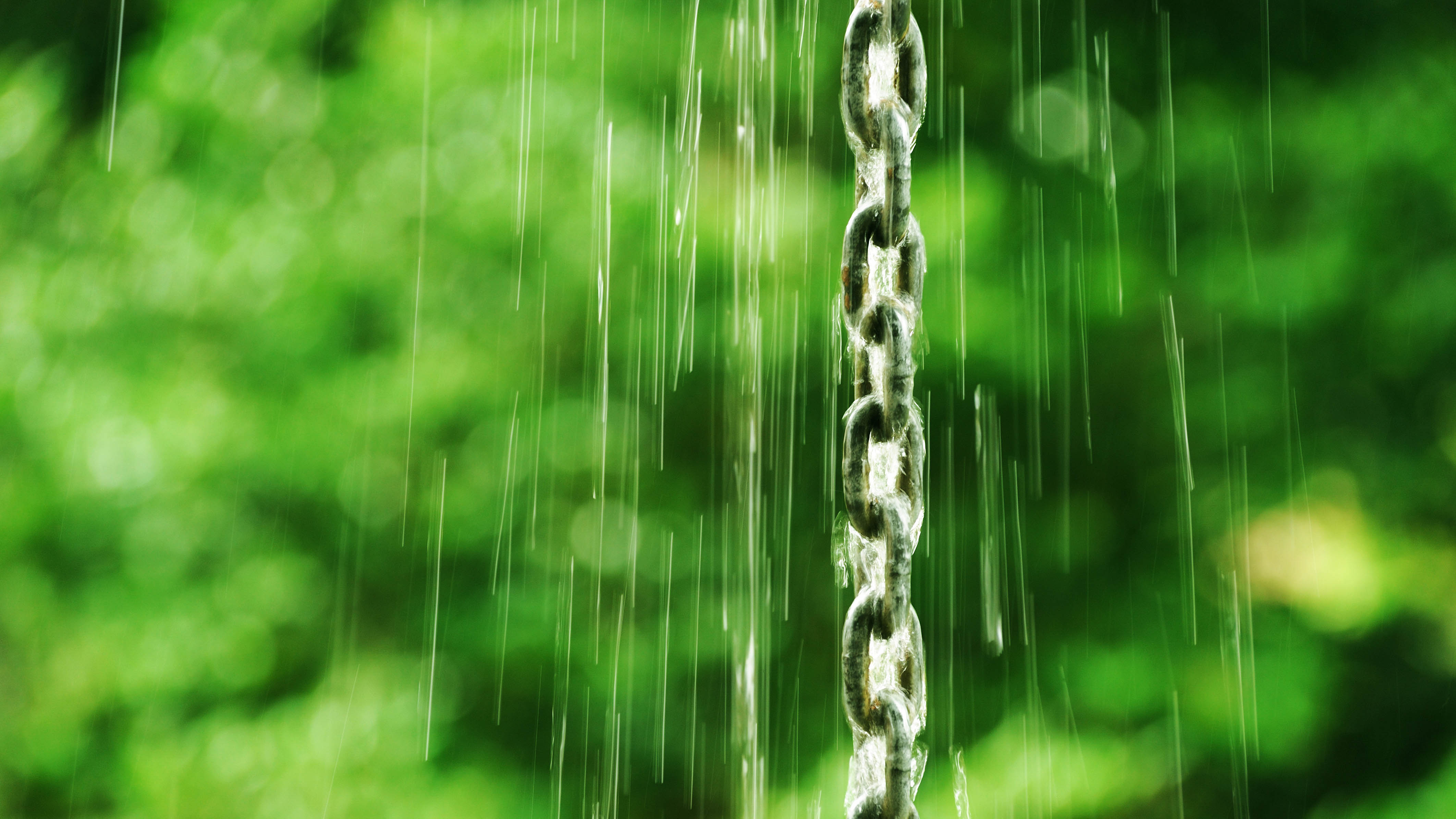
Water is among the Earth’s most precious resources, and considering drought conditions that have plagued various communities all over the planet, any strategy that conserves and directs needed water is worth considering. That’s where rain chains come in.
Seen mostly on single-family homes, rain chains are decorative metal structures constructed with vertical links that are designed to catch and funnel rainwater from roof gutters to other parts of your property. With a rain chain, rainwater runoff gets distributed from the rooftop gutter downward and through the device. Rain chains are made of a series of receptacles, chained together via a hole in the bottom of each. They are available for purchase in standard lengths of about eight feet – though the length is adjustable – and most kits come with a hanger. Do it yourself types can construct their own unique rain chain from scratch.
Often ornamental and artistic, rain chains can visually enhance your front or back yard and even provide the relaxing sound of cascading water as the rain trickles down the chain from the roof to the ground.
Rain chains are not a novel concept, but they may be obscure to some in the west. Originating in Japan where they are called Kusari-Doi, they’ve been used for thousands of years. They are also popular in various places in South America.
Here are the major benefits of using a rain chain. Plus, here are 7 ways to collect and reuse rainwater.
Reasons to use a rain chain
They're functional
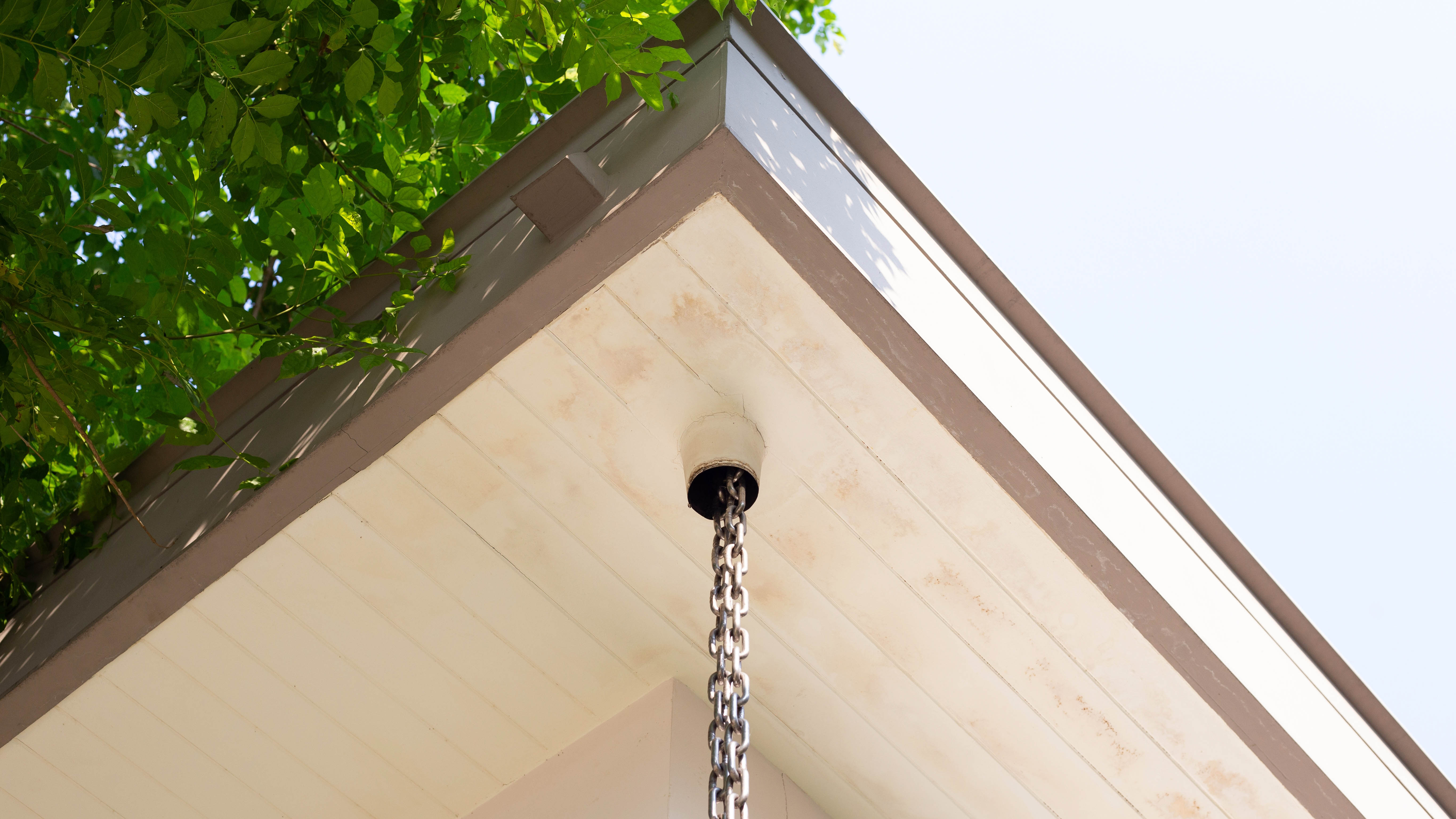
Rain chains attach to gutters or eaves, a replacement for the familiar closed gutter downspout. Just place them at the corner of the gutters, where a traditional downspout would be located. As rain water falls down the roof and into the gutter, the gutter funnels the water to the rain chain. The rain fills the top receptacle first, then overflows into the one below it, and on down the line.
As rain follows the path of the chain, you can collect it in a rain barrel, irrigate nearby flower beds, or just divert water away from the house and into soil to prevent flooding.
Get instant access to breaking news, the hottest reviews, great deals and helpful tips.
They're attractive
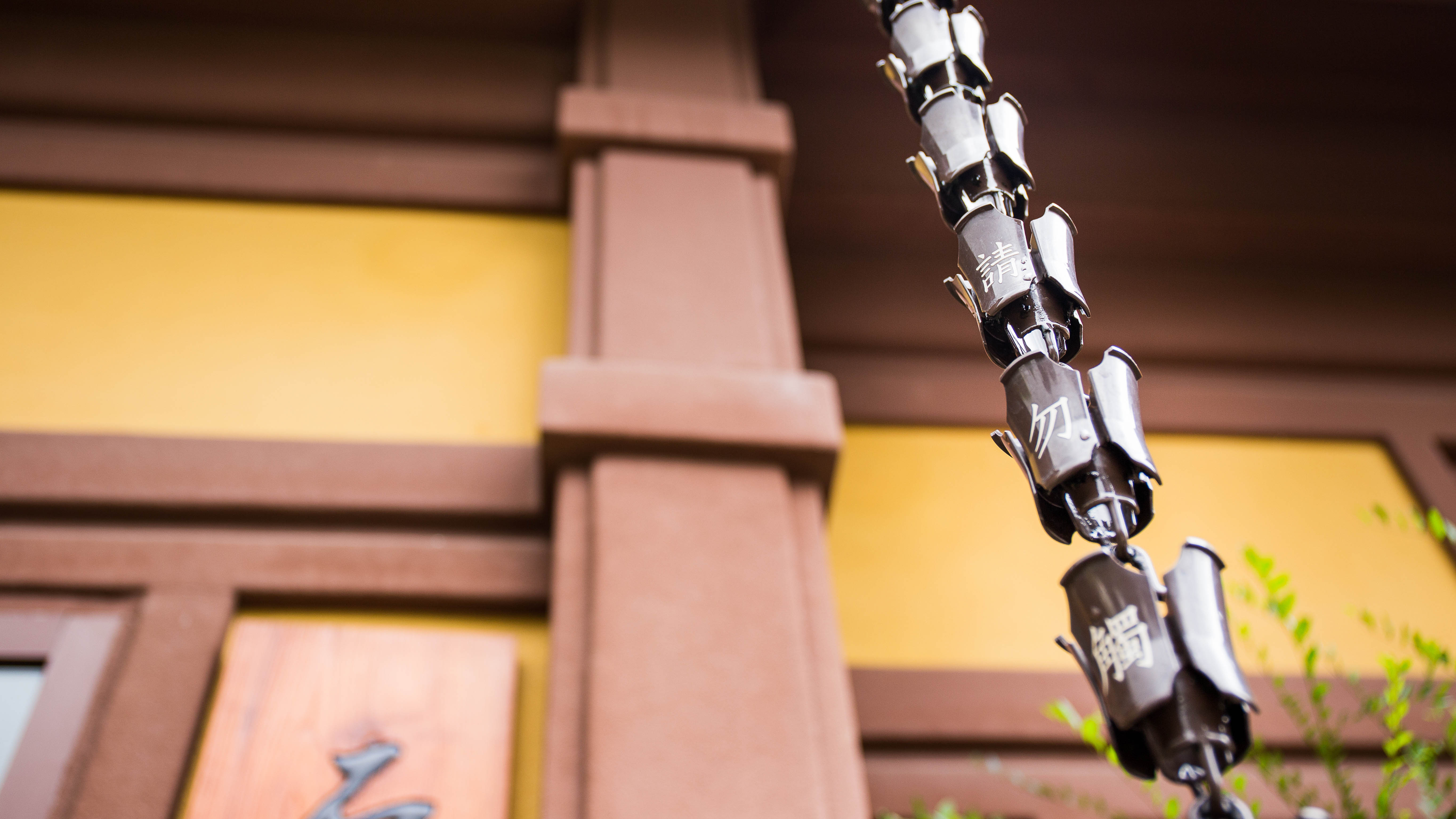
Just because rain chains serve a household purpose doesn’t mean they have to look utilitarian. Rain chains can be quite a decorative and unique addition to your garden aesthetic. Rain chains come in many varieties such as ornamental chain links, cascading enamel cups, copper pails, and flower petal designs, not to mention leaves, fishes, and umbrellas. They are available in numerous coatings, colors, and finishes like natural bronze, black, or white powdercoat, and materials like aluminum and steel. Copper finishes are especially pleasing because as they age, they take on a smooth color-tinted patina.
Link chain styles hark back to the item’s original chain form factor and often are splashier than cup styles – meaning they generate wider water splashes. That said, link chains feature an open and clean look that is appropriate for both modern home designs and rustic settings. On the other hand, cup-based designs may be superior in performance and efficiency because their open bottoms act as funnels that focus the water from one cup down into the next in a lovely waterfall. Even in heavy rainfall, cup styles – which come in a huge array of shapes and sizes – produce minimal splashing, so you can place them anywhere.
They can perform a variety of functions
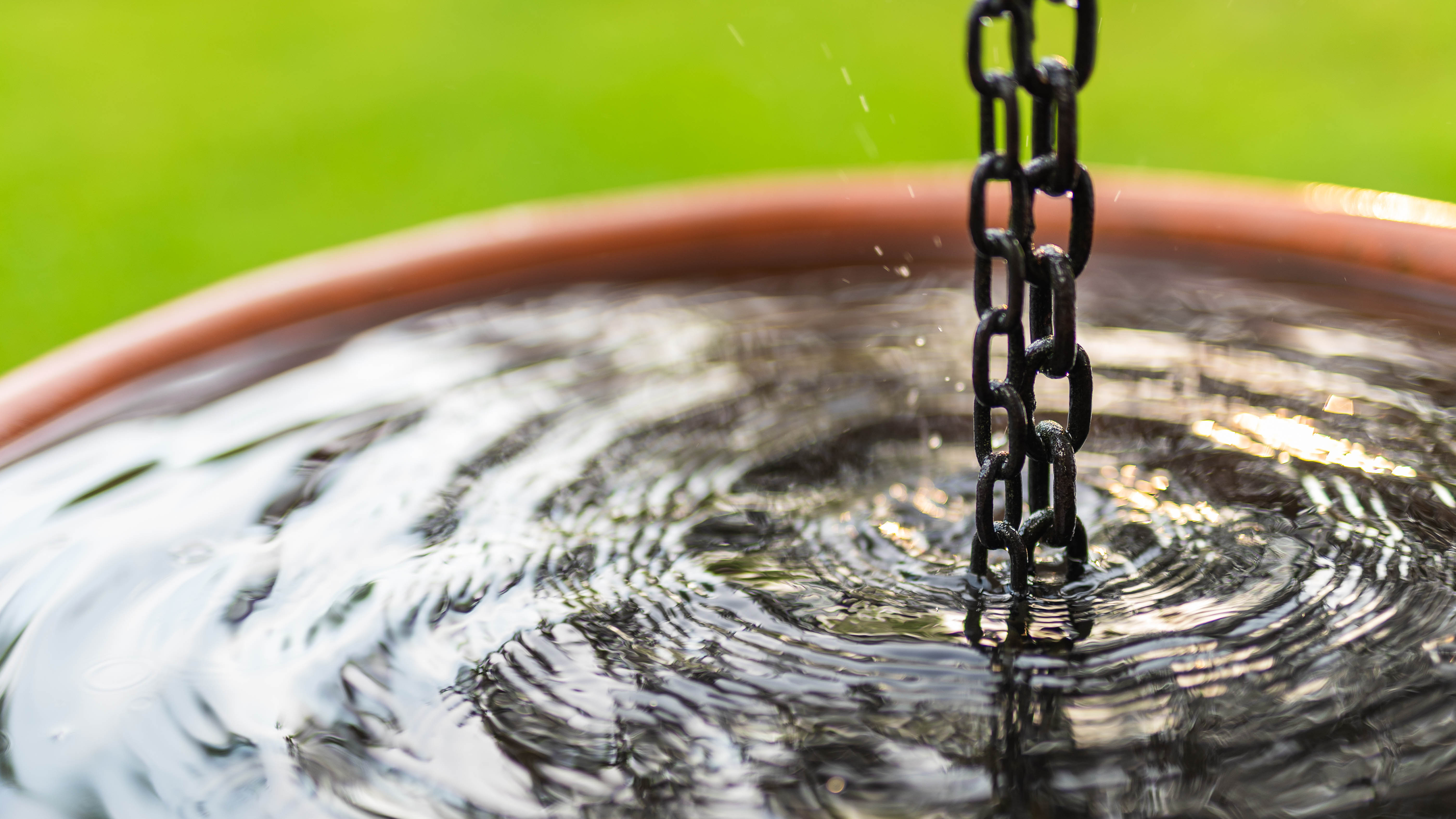
With rain chains, water doesn’t just fall to the ground. You can train the water into a ceramic or stoneware pot so that when it rains, the water drips into the pot for an interesting visual. A redwood or cedar container filled with stones or pebbles breaks the waterfall. You can even use a ceramic bowl as a catch basin.
You can also lay stones on the ground that act as an anchor to control where the water flow goes. Leading the rain chain into a rain barrel can let you collect and save large amounts of water from heavy rains.
They're a DIY natural
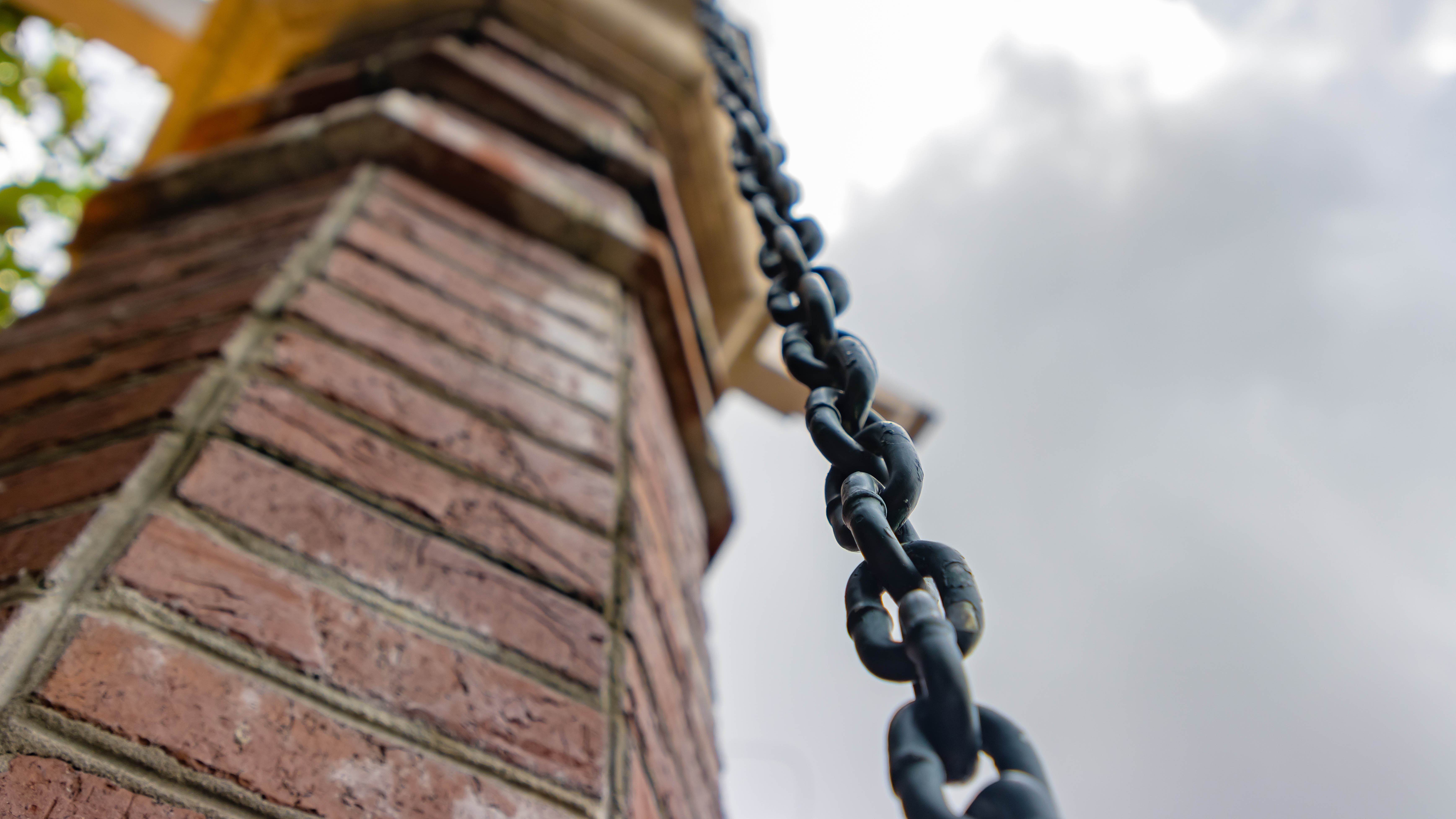
You don’t have to spend a lot of money for a rain chain – you can make one yourself that will function just as well as a store-bought item. You can start with a regular linked chain – it’s not fancy – for a rustic look. You can also design your own chain with water resistant materials like shower curtain rings, metal candle holders, or soda can pop tops, bound together with a long stiff wire to hold everything in place and make it easy to position in your preferred location.
You can color your creation any way you like as long as all materials are waterproof. You can dig a small hole in the ground where the chain lands and line it with stones to stop the chain from moving or help divert water toward a flower bed.
They're easy to install
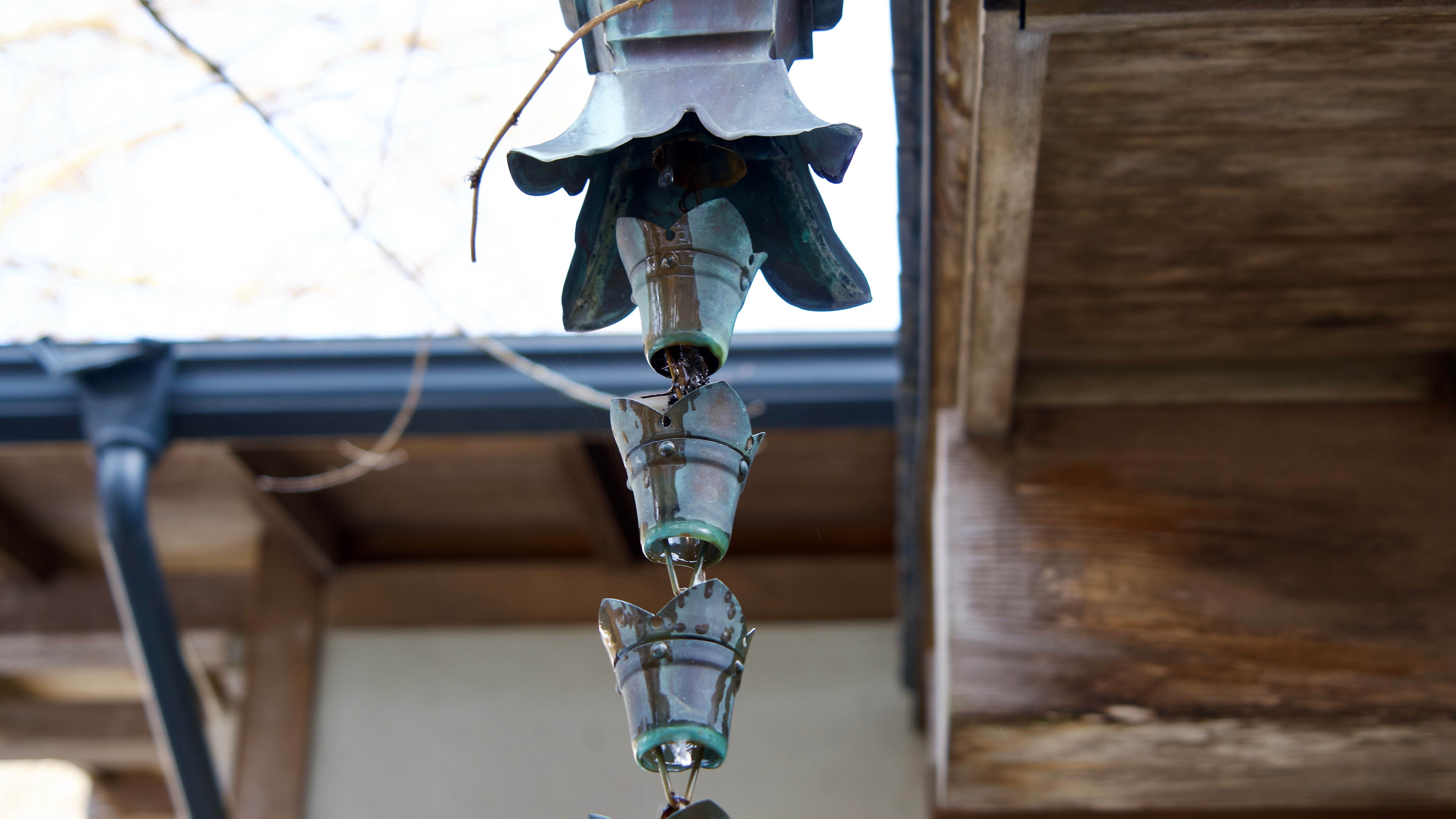
Installing a rain chain is simple, especially with gutter attachment hardware, as they generally hang from the hole where the downspout would be. You can also use a separate installation kit to reduce the hole and focus water toward the chain. The kit should provide an outlet tube to prevent water from moving along the underside of the gutter or from dripping off. You want to keep your rain chain clean so that cup designs do not get clogged with debris.
Whatever you do, make sure to secure the rain chain to the ground or a receptacle to prevent accidents and ensure proper drainage. You don’t want the chain swinging in high wind, which can damage the exterior of your home or hurt someone and you don’t want stagnant water pooling on the ground near your house. Be sure to roughly align the size of your rain chain with the size of your downspout holes so that the whole contraption stays neat and functional.
Reasons to skip rain chains
They have a limited water capacity
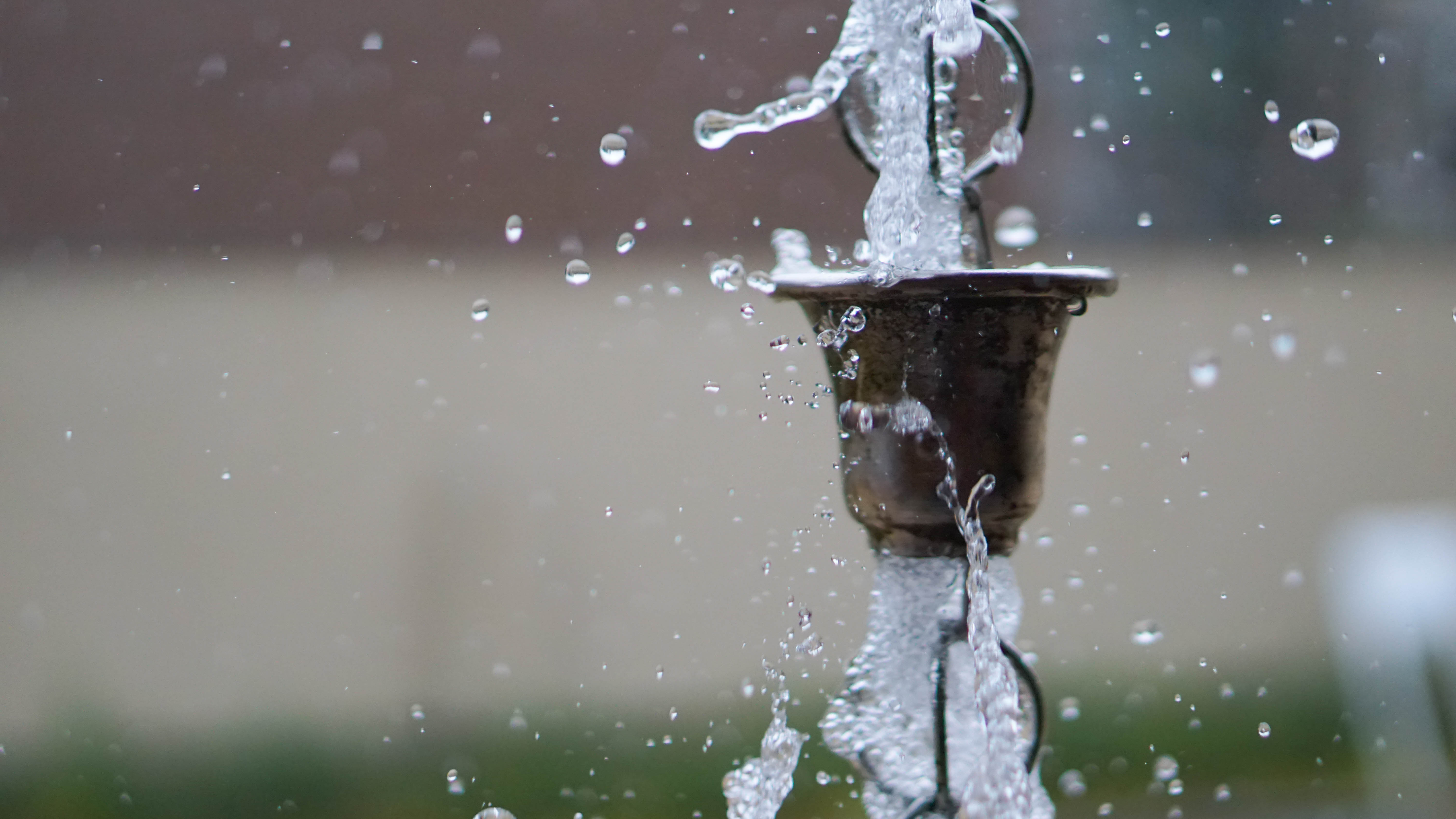
Anyone who lives in a drought zone is forced to think about water conservation all the time. Rain chains can help you save every precious drop of water by allowing precipitation to drip into large water barrels or other containers to use as needed.
Are rain chains all sweetness and light? Well, mostly, but there are a couple of potential downsides you should note. Rain chains have an inherently limited water capacity so that with heavy storms, too much splashing could get out of control and defeat the purpose of the chain. While rain chains can direct rain water, it’s going to be in one direction: down. If you need to divert rain water elsewhere on your property or a significant distance from the house foundation, a rain chain won’t cut it.
Depending on the amount of water you want to conserve, you should be ready to replace, empty, or move the receptacles you set up to catch the water so there won’t be too much overflow that could lead to flooding. Rain chains are mostly effortless to maintain, but there are moving parts that can weaken or clog over time, so you need to take care of your rain chain, just as you would your gutters.
If you’re ready to give rain chains a try, they're widely available online and from home and garden stores. Prices start from $25 on Amazon.
More from Tom's Guide
Jackie is an obsessive, insomniac tech writer and editor in northern California. A wildlife advocate, cat fan, and photo app fanatic, her specialties include cross-platform hardware and software, art, design, photography, video, and a wide range of creative and productivity apps and systems. Formerly senior editor at Macworld and creativity editor at The Next Web, Jackie now writes for a variety of consumer tech publications.

